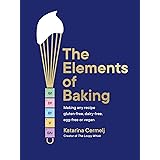A recent culinary survey indicates over 85% of households possess the core ingredients for a minimalist, yet deeply satisfying, Aglio e Olio. The video above masterfully demonstrates this principle. It shows how simple components can transform into a profound gustatory experience. This timeless dish, spaghetti with garlic and olive oil, truly embodies culinary ingenuity.
This humble Italian staple is more than just a quick meal. It represents a pillar of ‘cucina povera’. Despite its simplicity, many complexities underpin its preparation. Achieving the perfect Aglio e Olio requires a precise methodology. Understanding these nuances elevates the dish significantly.
The Essential Components of Aglio e Olio
The magic of Aglio e Olio resides in its few, high-quality ingredients. Each element serves a critical function. Quality sourcing is paramount for flavor development. This culinary axiom holds particular relevance here.
Garlic: The Soul of Aglio e Olio
Garlic is not merely an aromatic; it is the dish’s very essence. Its transformation during sautéing dictates the final flavor profile. Slicing the garlic thinly is generally preferred. This maximizes surface area for flavor release. Conversely, mincing risks rapid burning.
Optimal garlic preparation involves a gentle infusion. The allicin compound, responsible for garlic’s pungent aroma, converts to other sulfur compounds when heated. Browning should be gradual. A light golden hue signals perfect caramelization. However, burnt garlic introduces an undesirable bitterness. This must be meticulously avoided.
Olive Oil: The Golden Elixir
Extra Virgin Olive Oil (EVOO) is irreplaceable for authentic Aglio e Olio. Its fruity notes and peppery finish are integral. Conversely, refined olive oils lack the necessary depth. EVOO provides the unctuous base for garlic infusion. This oil also forms the crucial emulsion.
A medium-low heat setting is imperative. This prevents the EVOO from reaching its smoke point. High heat degrades the oil’s beneficial polyphenols. Furthermore, the oil’s delicate flavors are compromised. A slow, steady infusion is always superior.
Chili Flakes: A Fiery Accent
Red pepper flakes, or peperoncino, introduce a welcome warmth. They add a subtle counterpoint to the garlic. The capsaicin within the flakes provides this piquancy. Its heat is oil-soluble, distributing evenly throughout the sauce.
Adjusting the quantity of flakes allows for personalized heat levels. Some prefer a robust spice. Others opt for a mere whisper of heat. Introduction early in the oil infusion maximizes flavor extraction. However, excessive heat can render them acrid.
Spaghetti: The Perfect Canvas
Durum wheat spaghetti is the traditional pasta choice. Its long strands provide an ideal surface for the sauce. Al dente cooking is non-negotiable. This retains a slight chew, offering textural contrast. Overcooked pasta turns mushy, ruining the experience.
The starch released from the pasta is vital. This starchy water is often referred to as “liquid gold”. It is the fundamental component for emulsification. Without it, the sauce remains an oil slick.
The Science of Emulsification in Aglio e Olio
The transformation from disparate ingredients to a cohesive sauce is central. This process relies heavily on emulsification. Starchy pasta water acts as the emulsifying agent. It binds the oil and garlic flavors. This creates a velvety, clinging sauce.
Reserved Pasta Water: The Secret Ingredient
As highlighted in the video, reserving pasta water is crucial. Its high starch content is unmatched. This starch, gelatinized by heat, creates a stable bond. The oil and water, typically immiscible, are coerced into unity. This forms a glossy, homogenous sauce that coats each strand of spaghetti beautifully.
A general ratio of pasta water to oil is developed. This ensures proper sauce consistency. Adding small amounts gradually is key. This controlled hydration prevents a watery outcome. The goal is a rich, unctuous texture.
The Art of Tossing
Vigorous tossing further aids emulsification. The mechanical action helps distribute oil and water. It forces them into a more stable suspension. A wide, shallow pan facilitates this motion. This allows adequate space for proper incorporation. Tossing also ensures even seasoning and coating.
Mastering the Aglio e Olio Technique
Beyond ingredients, technique defines a superb Aglio e Olio. Precision in timing and temperature control is paramount. Each step builds upon the last. This synergy creates the culinary masterpiece.
Garlic Infusion: Temperature Control
Initiate garlic infusion in cold olive oil. This allows for a slow, gentle extraction of flavor. As the oil heats, garlic’s aromatic compounds slowly release. This prevents shocking the garlic, which can lead to bitterness. A persistent, low simmer is maintained.
The video mentions sautéing garlic. This is a delicate balance. The garlic must soften and become fragrant. It should not turn dark brown. This crucial stage requires constant vigilance. Approximately one minute of gentle simmering is often sufficient once the oil is hot.
Pasta Integration and Sauce Formation
Drained pasta is transferred directly into the garlic-infused oil. This occurs while the garlic is still warm. A ladleful of reserved pasta water is immediately added. This initiates the emulsification process. The pan is then tossed vigorously over low heat.
Additional pasta water can be incorporated as needed. The sauce should visibly thicken and cling. The starch and oil must form a cohesive bond. This creates the signature glossy texture. This process transforms the dish from mere spaghetti with oil to a truly sauced pasta. The consistency should be neither too oily nor too watery.
Elevating Your Aglio e Olio: Expert Variations and Tips
While classic Aglio e Olio is perfect in its simplicity, subtle enhancements are possible. These variations build upon the fundamental recipe. They introduce additional layers of flavor and complexity. However, the core identity of Aglio e Olio must be preserved.
Fresh Herbs and Zest
Finely chopped fresh parsley is a common addition. It provides a bright, herbaceous counterpoint. Parsley is incorporated at the very end of cooking. Its delicate flavor is preserved. Lemon zest offers another dimension. It introduces a fresh, citrusy aroma. This brightens the overall profile. The zest is grated directly over the finished dish.
Umami Boosters
A small anchovy fillet can be melted into the hot oil. This provides a deep umami base. The anchovy dissolves completely, leaving no fishy taste. Its saltiness enhances other flavors. Toasted breadcrumbs, pan-fried in olive oil, offer textural contrast. They add a rustic, nutty crunch. These are sprinkled just before serving. However, purists often omit these additions.
Ingredient Sourcing: The Unsung Hero
High-quality ingredients are truly non-negotiable. Invest in superior garlic, preferably organic. Its flavor profile is significantly richer. Purchase a reputable Extra Virgin Olive Oil. Its provenance and pressing methods impact flavor. A premium dried spaghetti, made from 100% durum wheat, yields the best texture. These choices elevate a simple dish. The integrity of your Aglio e Olio depends on it.
The Aglio e Olio experience can transcend mere sustenance. It becomes an act of culinary appreciation. Every component plays a vital role. From garlic’s careful caramelization to precise pasta water emulsification, attention to detail is paramount. This classic garlic and olive oil pasta offers a sublime journey of flavor and texture. It truly is a testament to minimalist Italian cooking.











